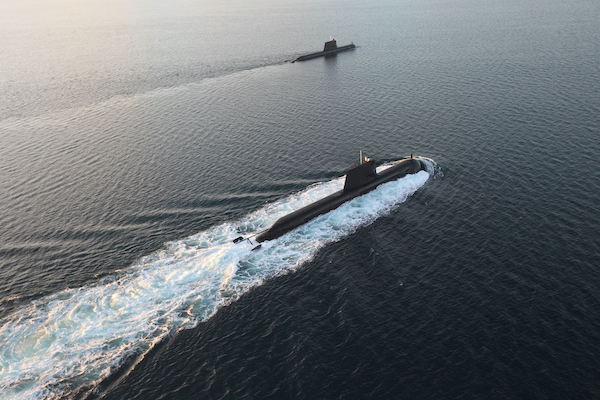ASC, CSIRO, DMTC to pioneer additive manufacturing for submarines

Australia’s dedicated submarine sustainment organisation, ASC, is collaborating with Australia’s national science agency, CSIRO, and DMTC Limited, to pioneer the use of additive manufacturing for the repair of Collins Class submarines.
The partners have joined forces to further develop ‘cold spray’ technology for repairing damaged metal surfaces, to enable the future in situ repair of submarine components.
Successful development of the cold spray technique for this specific maritime application will allow Australian submarines to remain at sea for longer, without the need to dock for lengthy repairs.
Cold spray is an additive manufacturing and repair method that uses a stream of supersonic gas to accelerate metal powder particles at a surface, building up a dense deposit.
The innovative process occurs below the melting temperatures of the metals involved, which avoids damaging the structural integrity of the components and surrounding area.
The technique has been proven in aerospace applications by RUAG Australia which has applied it to airframe and equipment repairs on platforms such as the Navy’s Seahawk helicopters and the RAAF’s Hornet fighters.
Research Team Leader at CSIRO, Dr Peter King, said, “CSIRO has spearheaded the adoption of cold spray by Australian industry since first introducing the technology 18 years ago. We have developed unique cold spray-based solutions for the printing industry, aerospace, rail and for combating marine biofouling. The team is focussed on working closely with local companies to develop new intellectual property for Australia and to deliver on national missions such as building sovereign capability,” Dr King said.
The two-year project seeks to deliver breakthroughs in submarine repair and cost-of-ownership reductions for the Royal Australian Navy, through expert contributions from industrial and research partners.
DMTC Chief Executive Officer, Dr Mark Hodge, said the project builds on the relationship between ASC and CSIRO since 2015 but will also leverage DMTC’s long history in developing cold spray as a repair technology for defence applications. “Our work to date has mainly focused on the aerospace domain, but we are now looking to apply that to submarines and other defence applications,” Dr Hodge said.
The project will see ASC engineers working with CSIRO’s Lab22 research facility for additive manufacturing of metals, in Melbourne, to develop portable equipment for in-situ repair in the confines of a submarine.
